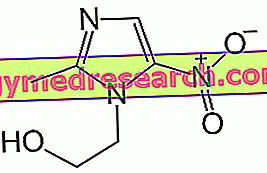mastodynia
The expression "pain in the breast" is commonly used to indicate a generic tenderness to the breasts. Typical of women, breast pain is an extremely subjective symptom, ranging from a simple breast tension to a sharp, intense and penetrating pain.

Due to its psycho-physical implications, mastodinìa puts a strain on the patient's tranquility, resulting in one of the most emblematic pains for the female world. In fact, patients often end up combining a particular and unusual breast pain with conditions that are to say the least catastrophic: erroneously, many women tormented by a breast pain are convinced of being affected by a neoplastic form (tumor) when, in In reality, the symptom could be the simple result of a hormonal alteration.
However, for the serenity of the woman, we always recommend a check-up by a specialist, who can draw up a correct diagnosis and prescribe the most appropriate therapy.
The aim of this article is to learn more about this problem, analyzing its symptoms and giving it a first interpretation.
What can it be?
Depending on the type of pain perceived, it is possible to perform a first and hypothetical DIY diagnosis. Remember, however, that in the case of continuous and suspicious breast pain, which cannot be placated with common analgesic drugs, the opinion and visit of the doctor are, to say the least, fundamental to surprise in the bud a possible disease in the initial stage.
Breast pain is often described as chronic tenderness, acute burning or unpleasant tension in the breast tissue. Furthermore, breast pain does not necessarily occur on an ongoing basis: many women, in fact, accuse the problem from time to time, without being able to give it a precise explanation.
There are more types of mastodynia:
- Breast pain related to the menstrual cycle, the undoubtedly most widespread form of mastodynia: the discomfort recurs with a certain cyclicality, generally 5-10 days before the arrival of menstruation. Mastodynia normally affects both breasts and the pain disappears as the menstrual flow fades.
- Pain coming from the chest wall that radiates under the breast: in this case, the explanation of the disorder may reside in rheumatic, muscular or bone diseases.
- Breast pain due to Herpes zoster infections: the very special breast tenderness that appears in these circumstances is always accompanied by a particularly noticeable local bullous rash.
- Pathological breast pain dependent on tumors: this is a very rare form of mastodynia since breast neoplasms do not usually manifest with this symptom. Approximately, it is estimated that only 1 in 200 cases of breast pain originates from a tumor form.
Interpreting breast pain
In the presence of a generic pain in the breast, a first and indicative self-diagnosis is essential to unmask any pathological disorders already in the initial stage. To interpret breast pain it is necessary to recognize its intensity, duration, frequency and precise location. The self-examination and the observation of the udders are two very useful practices to recognize early and hypothetical anomalies at the breast level:
- Through self-examination of the breast, a practice that is not easy to learn, it is possible to recognize any suspicious nodules and abnormal changes in the shape and size of the breasts. It is important that the self-examination is performed regularly by the woman, not only when there is breast pain.
- Breast observation is also essential for a first self-diagnosis of breast pain. When the breast is not altered in its shape and the nipples are naturally protruding, the perceived breast pain generally reflects a benign condition. When, on the other hand, the nipples have indentations, they emit a milky / yellowish secretion after a slight squeezing and the skin of the breast assumes an abnormal appearance, the doctor's consultation is strongly recommended, since the pain could hide a pathological disorder.
When breast pain follows a certain cyclicality, it is not accompanied by the formation of permanent mammary / axillary nodules, and there are no variations in the shape, size or consistency of the breasts, the most obvious interpretation is fortunately the least worrying: the cause of mastodynia is to be found precisely in the hormonal variation typical of the menstrual period (cycle breast pain).
When, on the other hand, there are densities in any area of the breast (which do not disappear after the onset of menstruation), the nipple is retracted, the pain does not recur with a certain regularity and the breast undergoes any change in shape or size, the medical examination is essential. Only through the palpation to the breast performed by a competent figure, possibly supported by mammograms and other specific breast tests, it is possible to go back to the precise trigger, therefore to act accordingly.
Even in the absence of suspicious signs and breast pain, regular check-ups and mammograms are recommended, especially after the age of 40: some mammographic abnormalities can in fact be asymptomatic, thus causing neither breast pain nor other symptoms.



